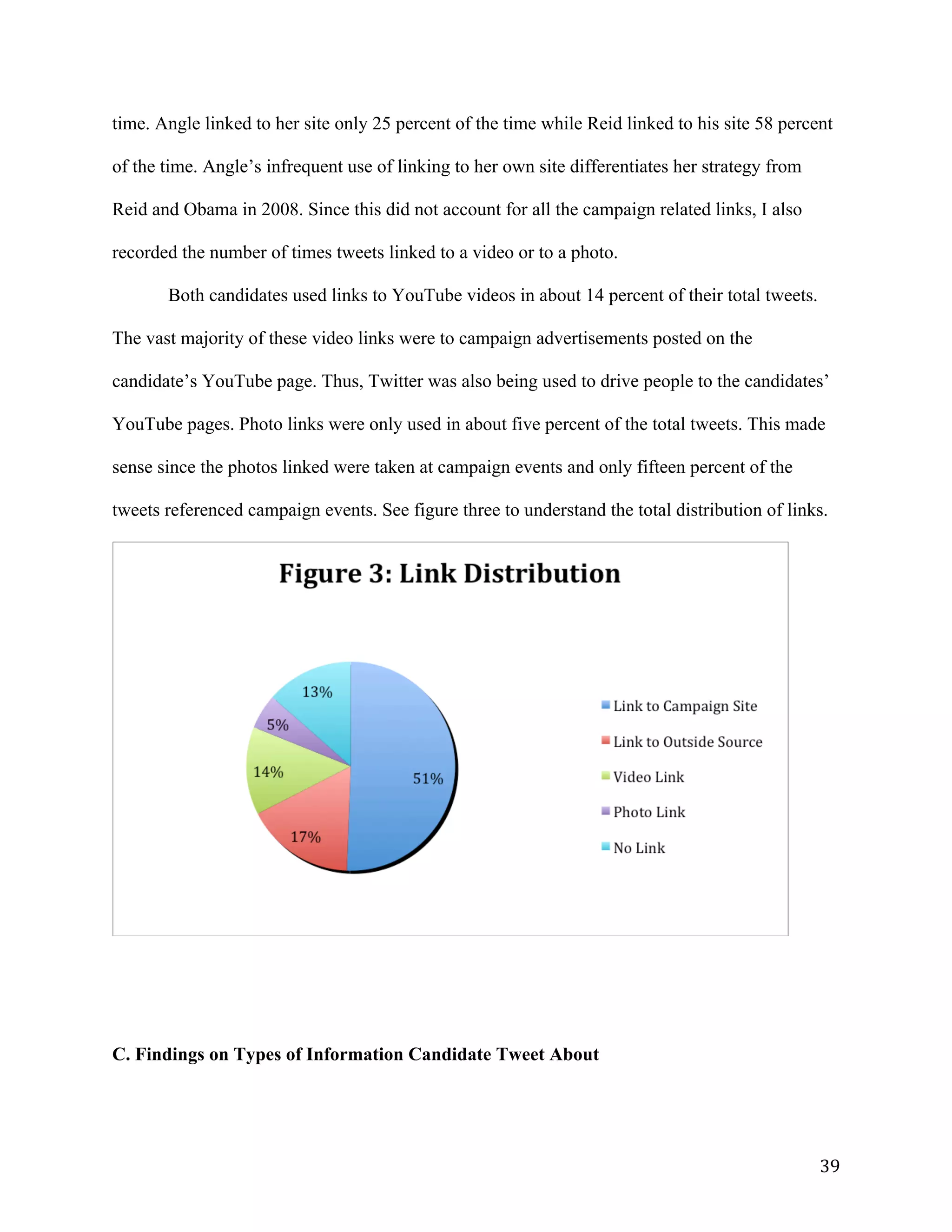The document discusses a study on the role of Twitter in the 2010 Nevada Senate race between Harry Reid and Sharron Angle. It begins by providing background on Twitter and how it has been used in political campaigns. It then discusses different theories about how the internet and new technologies can impact political participation and engagement. Specifically, it examines the instrumental approach which posits that lower communication costs increase participation, and the psychological approach which argues individual motivations and attributes determine online political involvement. The document will analyze tweets from Reid and Angle's campaigns and compare them to mainstream media coverage, in order to understand how Twitter was utilized in this competitive Senate election.








































![41
*Please note: figure shows number of GOTV tweets on a give day
In order to fully understand how candidates were using Twitter, I also recorded the
number of their tweets that were retweets, the number of tweets that were personal observations,
and the use of inclusive language (we, your[s], our[s]). Retweets were recorded to help measure
how candidates were engaging with their followers. I found that 12 percent of the total candidate
tweets from October 1-November 2 were user retweets (13.5 percent of Reid’s tweets and 8.4
percent of Angle’s tweets). Thus, Angle and Reid were using Twitter to engage with followers
by retweeting them.
Since all of the current studies on Twitter suggest that using an authentic voice enables
politicians to most effectively reach followers, I expected that both Reid and Angle would use an
authentic voice. I coded for authenticity based on whether tweets were categorized as personal
Figure
5:
GOTV
Tweets
Across
Time](https://image.slidesharecdn.com/107c5bc8-5997-4042-869c-4cb3a8c38d14-151110033716-lva1-app6892/75/Kottler-Thesis-2011-41-2048.jpg)



















